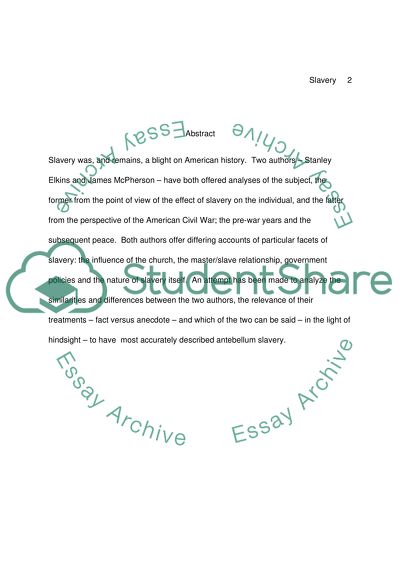Cite this document
(“Comparative analysis of Elkins historical interpretation of slavery Essay”, n.d.)
Retrieved from https://studentshare.org/history/1578043-comparative-analysis-of-elkins-historical-interpretation-of-slavery-with-james-mcphersons-interpretation-in-ordeal-by-fire
Retrieved from https://studentshare.org/history/1578043-comparative-analysis-of-elkins-historical-interpretation-of-slavery-with-james-mcphersons-interpretation-in-ordeal-by-fire
(Comparative Analysis of Elkins Historical Interpretation of Slavery Essay)
https://studentshare.org/history/1578043-comparative-analysis-of-elkins-historical-interpretation-of-slavery-with-james-mcphersons-interpretation-in-ordeal-by-fire.
https://studentshare.org/history/1578043-comparative-analysis-of-elkins-historical-interpretation-of-slavery-with-james-mcphersons-interpretation-in-ordeal-by-fire.
“Comparative Analysis of Elkins Historical Interpretation of Slavery Essay”, n.d. https://studentshare.org/history/1578043-comparative-analysis-of-elkins-historical-interpretation-of-slavery-with-james-mcphersons-interpretation-in-ordeal-by-fire.


